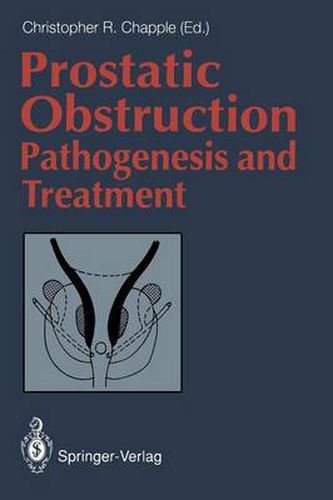Readings Newsletter
Become a Readings Member to make your shopping experience even easier.
Sign in or sign up for free!
You’re not far away from qualifying for FREE standard shipping within Australia
You’ve qualified for FREE standard shipping within Australia
The cart is loading…






This title is printed to order. This book may have been self-published. If so, we cannot guarantee the quality of the content. In the main most books will have gone through the editing process however some may not. We therefore suggest that you be aware of this before ordering this book. If in doubt check either the author or publisher’s details as we are unable to accept any returns unless they are faulty. Please contact us if you have any questions.
The human prostate gland is of undoubted importance in reproductive physiology and is one of the commonest causes of clinical urological problems in the male patient. Despite the wealth of published lit erature relating to the prostate gland surprisingly little is understood about its neural innervation, the influence of pharmacological factors and its precise physiological functions. Indeed, benign disorders of the prostate gland including benign prostatic hyperplasia, bladder neck dyssynergia and inflammatory disorders of the prostate (prostatitis, prostatodynia) although well recognised clinically, are as yet poorly characterised and understood. It was not until the late 1960s that the subject of urodynamics, which for the first time allowed scientific assessment of the function of the lower urinary tract, was introduced. The first section of this book considers recent advances in our understanding of the innervation of the bladder and prostate gland and the changes in bladder function which accompany prostate medi ated bladder outflow obstruction. The clinical consequence of benign prostatic hyperplasia in many patients is bladder outflow obstruction and although the traditional treatment of these conditions is by the use of ablative surgery, in recent years a number of new modalities have been investigated and are reviewed in the second section of the book.
$9.00 standard shipping within Australia
FREE standard shipping within Australia for orders over $100.00
Express & International shipping calculated at checkout
This title is printed to order. This book may have been self-published. If so, we cannot guarantee the quality of the content. In the main most books will have gone through the editing process however some may not. We therefore suggest that you be aware of this before ordering this book. If in doubt check either the author or publisher’s details as we are unable to accept any returns unless they are faulty. Please contact us if you have any questions.
The human prostate gland is of undoubted importance in reproductive physiology and is one of the commonest causes of clinical urological problems in the male patient. Despite the wealth of published lit erature relating to the prostate gland surprisingly little is understood about its neural innervation, the influence of pharmacological factors and its precise physiological functions. Indeed, benign disorders of the prostate gland including benign prostatic hyperplasia, bladder neck dyssynergia and inflammatory disorders of the prostate (prostatitis, prostatodynia) although well recognised clinically, are as yet poorly characterised and understood. It was not until the late 1960s that the subject of urodynamics, which for the first time allowed scientific assessment of the function of the lower urinary tract, was introduced. The first section of this book considers recent advances in our understanding of the innervation of the bladder and prostate gland and the changes in bladder function which accompany prostate medi ated bladder outflow obstruction. The clinical consequence of benign prostatic hyperplasia in many patients is bladder outflow obstruction and although the traditional treatment of these conditions is by the use of ablative surgery, in recent years a number of new modalities have been investigated and are reviewed in the second section of the book.